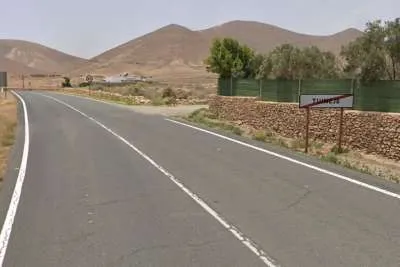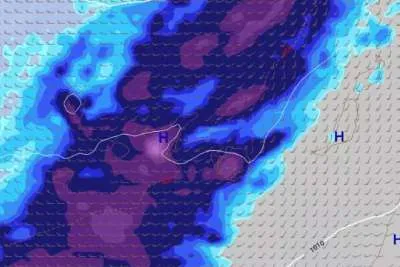9 things you need to know about ETIAS before it becomes effective in November
- 11-02-2023
- National
- Canarian Weekly
By the end of this year, travellers from over 60 countries, who currently can travel to the Schengen Area without a visa, will need to apply for a travel authorisation to be able to enter any of the Member States, as the launch of the European Travel Information and Authorisation System (ETIAS), which has been postponed several times now, is unlikely to be postponed again.
This means that travellers should prepare to apply for an ETIAS authorisation starting from November 2023, in particular those who plan on travelling to any country in the Schengen Zone, including Spain and the Canary Islands, in the last two months of the year.
While the EU has undertaken a few steps to inform citizens of third countries, including the UK, who will need an ETIAS in the future and several more are planned for the following months, regarding the system, application procedures, fees, and more, travellers still remain confused about how ETIAS is going to affect them, and what’s its purpose.
Based on the most frequent questions regarding ETIAS, SchengenVisaInfo.com have clarified the top nine things you need to know before the system launches on 1st November 2023.
1 ETIAS is not a visa:
While the EU was still working on the regulations, many media and suspicious websites had claimed that ETIAS was a new type of visa, making travellers from over 60 world countries believe that they would soon need a visa to travel to the Schengen Zone, causing not only panic, but also anger amongst many.
In fact, ETIAS is not a visa. ETIAS is a visa waiver pre-screening program for all travellers under the EU visa-free program, in the same way as Americas ESTA, which is also a pre-screening program of travellers from over 40 countries that can enter the US under its Visa Waiver Program (VWP)
There are many differences between an ETIAS and a Schengen Visa, and amongst the most important ones is that in order to obtain a Schengen visa you need to make an appointment, collect a long list of documents, attend an interview, and pay quite a high fee.
In contrary, the application for a travel authorisation takes only about ten minutes, and there’s no need to attend an interview or make an appointment, or even collect the documents required for a visa. In addition, the fee is very cheap compared to Schengen visa fees.
2 ETIAS website is not live yet, but will be under ‘europa.eu’ domain:
There are currently lots of sites pretending to be the official ETIAS website, or others that appear as an official EU site. In addition there are others that claim to be intermediaries for obtaining an ETIAS, which is an absolutely unnecessary service.
In fact the website through which applicants will apply for an ETIAS has not been launched yet, but the EU authorities are working on it. The ETIAS website will be under the Europa.eu domain, which was confirmed by by an EU press officer in October 2020, which means that every other existing website, and others that will for sure pop up soon ending with .com, .net, .eu, etc, are not legitimate.
3 Schengen Visa Applicants will not be affected by ETIAS:
Travellers from over 100 world countries who currently need a Schengen visa to travel to any of the 27 Schengen Area countries for short-term periods and purposes like tourism, business, visiting family members, etc., will not need an ETIAS.
Yet, in case a country get visa liberalization after the ETIAS becomes effective, that’s when applicants from that country will start needing the ETIAS, instead of Schengen visas.
4 ETIAS is not a “Brexit Revenge”, it is a security measure:
Many British tabloids had tried to colour the creation of the ETIAS as a revenge action of the EU for Brexit, but this is very untrue.
Though the proposal for the creation of the ETIAS and the Brexit referendum in the UK for leaving the EU both took place in 2016, they are not related.
In fact, the idea to create the system is an attempt of the EU to secure its borders, after the wave of migrants that reached them in the years before, and a number of terrorist attacks that took place all over the block, and resulted with tens of Europeans losing their lives.
“We need to know who is crossing our borders. This way we will know who is travelling to Europe before they even get here,” the then-EU Commission’s President Jean-Claude Juncker said when presenting the proposal.
It is also expected that the scheme will assist EU countries to reduce entry procedures and waiting times at external borders, and reinforce the visa liberalisation policy.
5 Many other countries have similar schemes, including the US, Australia, and Canada:
The EU is not the first, nor the last, to introduce such a scheme. Other countries have operated similar systems, for almost identical purposes, for several years now.
The United States have operated the ESTA since 2007.The fee for an ESTA application is $4, and if approved, an additional fee of $17 is charged, for a total of US $21. This makes it almost three times more expensive than an ETIAS.
The UK is also working on a similar system, which for now is being called Electronic Travel Authorisation (ETA), and will serve for the same purpose as the ETIAS. This means that once the UK ETA becomes effective, travellers from the EU will need to obtain one to enter the territory of the UK.
6 Application procedures will take about 10 minutes:
As emphasised before, applying for an ETIAS, will be much easier than for a visa. Travellers will need to fill in some information, upload a scan of their passport, a photo, and it’s done.
7 ETIAS only costs 7 euros:
In spite of what some have tried to portray, the ETIAS is actually quite cheap. An ETIAS will cost only €7, which is less than all other travel authorisations systems operated by other countries.
8 You won’t need to apply for an ETIAS every time you travel:
Initially, an ETIAS will be valid for two years, unless the traveller’s passport expires within two years after application for an ETIAS, then the validity of the first-obtained ETIAS will be until the expiration of their passport.
Travellers who apply with passports that are valid more than two years, will obtain an ETIAS valid for two years.
Those who after their first ETIAS expires, apply for a second ETIAS, will receive it with a validity of up to five years, and then ten and so on.
9 The ETIAS is linked to the new Entry/Exit System:
The operation of the ETIAS is deeply linked to the launch of the Entry/Exit System (EES) whaich has been developed by the EU to enhance security in the Schengen Zone and will be used to track third country citizen 90/180 days stays.
The EES is a large-scale IT system which will replace visa stamping. It will be implemented as a part of the Smart Borders Package introduced by the EU in 2016.
It will also play an important role for Schengen visa applications, as once it becomes fully operational, authorities responsible for issuing Schengen visas shall consult the EES when processing them, as well as before decisions to annul, revoke or extend the period of validity of an issued visa.


























































